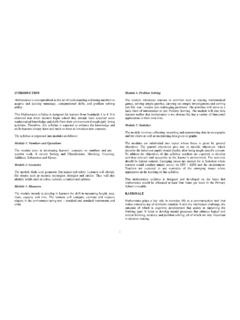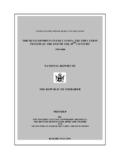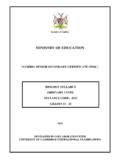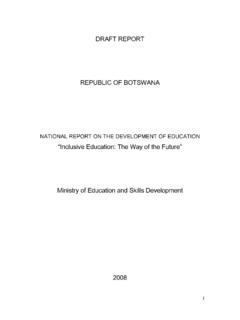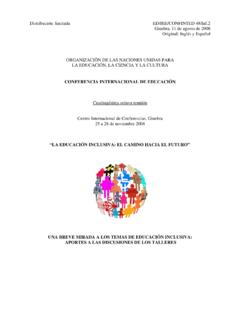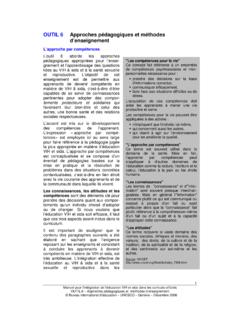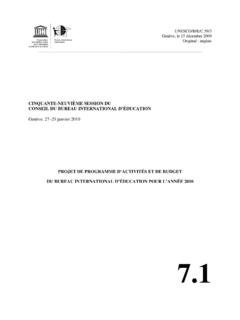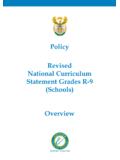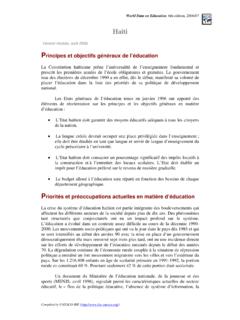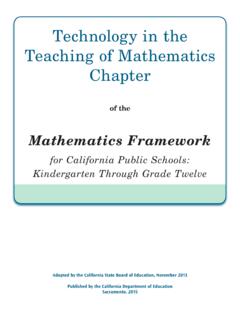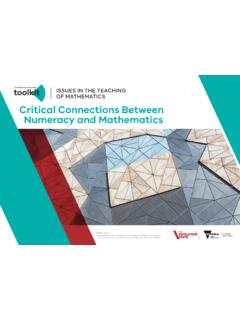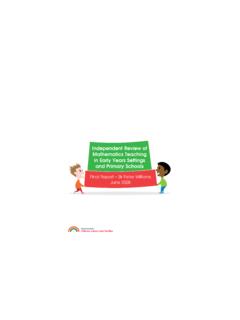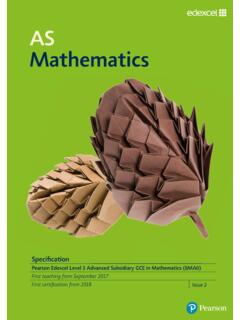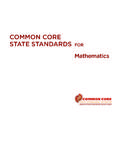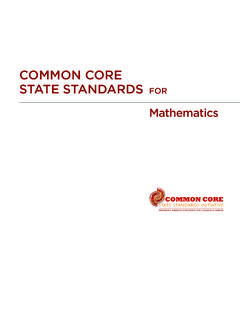Transcription of Effective pedagogy in mathematics - UNESCO
1 BIE Educational Practices Series 19_OK:Mise en page 1 20/10/09 9:1. EDUCATIONAL PRACTICES SERIES 19. INTERNATIONAL ACADEMY. OF EDUCATION. INTERNATIONAL BUREAU. OF EDUCATION. Effective pedagogy in mathematics by Glenda Anthony and Margaret Walshaw BIE Educational Practices Series 19_OK:Mise en page 1 20/10/09 9:1. The International Academy of Education The International Academy of Education (IAE) is a not-for-profit scientific association that promotes educational research, and its dissemination and implementation. Founded in 1986, the Academy is dedicated to strengthening the contributions of research, solving critical educational problems throughout the world, and providing better communication among policy makers, researchers, and practitioners. The seat of the Academy is at the Royal Academy of Science, Literature, and Arts in Brussels, Belgium, and its co-ordinating centre is at Curtin University of Technology in Perth, Australia.
2 The general aim of the IAE is to foster scholarly excellence in all fields of education. Towards this end, the Academy provides timely syntheses of research-based evidence of international importance. The Academy also provides critiques of research and of its evidentiary basis and its application to policy. The current members of the Board of Directors of the Academy are: Monique Boekaerts, University of Leiden, The Netherlands (President);. Erik De Corte, University of Leuven, Belgium (Past President);. Barry Fraser, Curtin University of Technology, Australia (Executive Director);. Jere Brophy, Michigan State University, United States of America;. Erik Hanushek, Hoover Institute, Stanford University, United States of America;. Maria de Ibarrola, National Polytechnical Institute, Mexico;. Denis Phillips, Stanford University, United States of America. For more information, see the IAE's website at: 2.
3 BIE Educational Practices Series 19_OK:Mise en page 1 20/10/09 9:1. Series Preface This booklet about Effective mathematics teaching has been prepared for inclusion in the Educational Practices Series developed by the International Academy of Education and distributed by the International Bureau of Education and the Academy. As part of its mission, the Academy provides timely syntheses of research on educational topics of international importance. This is the nineteenth in a series of booklets on educational practices that generally improve learning. It complements an earlier booklet, Improving Student Achievement in mathematics , by Douglas A. Grouws and Kristin J. Cebulla. This booklet is based on a synthesis of research evidence produced for the New Zealand Ministry of Education's Iterative Best Evidence Synthesis (BES) Programme by Glenda Anthony and Margaret Walshaw. This synthesis, like the others in the series, is intended to be a catalyst for systemic improvement and sustainable development in education.
4 It is electronically available at All the BESs have been written using a collaborative approach that involves the writers, teacher unions, principal groups, teacher educators, academics, researchers, policy advisers and other interested groups. To ensure rigour and usefulness, each BES has followed national guidelines developed by the Ministry of Education. Professor Paul Cobb has provided quality assurance for the original synthesis. Glenda and Margaret are associate professors at Massey University. As directors of the Centre of Excellence for Research in mathematics Education, they are involved in a wide range of research projects relating to both classroom and teacher education. They are currently engaged in research that focuses on equitable participation practices in classrooms, communication practices, numeracy practices, and teachers as learners. Their research is widely published in peer reviewed journals including mathematics Education Research Journal, Review of Educational Research, Pedagogies: An International Journal, and Contemporary Issues in Early Childhood.
5 Suggestions or guidelines for practice must always be responsive to the educational and cultural context, and open to continuing evaluation. No. 19 in this Educational Practices Series presents an inquiry model that teachers and teacher educators can use as a tool for adapting and building on the findings of this synthesis in their own particular contexts. JERE BROPHY. Editor, Michigan State University United States of America 3. BIE Educational Practices Series 19_OK:Mise en page 1 20/10/09 9:1. Previous titles in the Educational practices series: 1. teaching by Jere Brophy. 36 p. 2. Parents and learning by Sam Redding. 36 p. 3. Effective educational practices by Herbert J. Walberg and Susan J. Paik. 24 p. 4. Improving student achievement in mathematics by Douglas A. Grouws and Kristin J. Cebulla. 48 p. 5. Tutoring by Keith Topping. 36 p. 6. teaching additional languages by Elliot L.
6 Judd, Lihua Tan and Herbert J. Walberg. 24 p. 7. How children learn by Stella Vosniadou. 32 p. 8. Preventing behaviour problems: what works by Sharon L. Foster, Patricia Brennan, Anthony Biglan, Linna Wang and Suad al-Ghaith. 30 p. 9. Preventing HIV/AIDS in schools by Inon I. Schenker and Jenny M. Nyirenda. 32 p. 10. Motivation to learn by Monique Boekaerts. 28 p. 11. Academic and social emotional learning by Maurice J. Elias. 31 p. 12. teaching reading by Elizabeth S. Pang, Angaluki Muaka, Elizabeth B. Bernhardt and Michael L. Kamil. 23 p. 13. Promoting pre-school language by John Lybolt and Catherine Gottfred. 27 p. 14. teaching speaking, listening and writing by Trudy Wallace, Winifred E. Stariha and Herbert J. Walberg. 19 p. 15. Using new media by Clara Chung-wai Shih and David E. Weekly. 23 p. 16. Creating a safe and welcoming school by John E. Mayer. 27 p. 17. teaching science by John R.
7 Staver. 26 p. 18. Teacher professional learning and development by Helen Timperley. 31 p. These titles can be downloaded from the websites of the IEA. ( ) or of the IBE ( ) or paper copies can be requested from: IBE, Publications Unit, Box 199, 1211 Geneva 20, Switzerland. Please note that several titles are out of print, but can be downloaded from the IEA and IBE websites. 4. BIE Educational Practices Series 19_OK:Mise en page 1 20/10/09 9:1. Table of Contents The International Academy of Education, page 2. Series Preface, page 3. Introduction, page 6. 1. An ethic of care, page 7. 2. Arranging for learning, page 9. 3. Building on students' thinking, page 11. 4. Worthwhile mathematical tasks, page 13. 5. Making connections, page 15. 6. Assessment for learning, page 17. 7. Mathematical Communication, page 19. 8. Mathematical language, page 21. 9. Tools and representations, page 23.
8 10. Teacher knowledge, page 25. Conclusion, page 27. References, page 28. This publication was produced in 2009 by the International Academy of Education (IAE), Palais des Acad mies, 1, rue Ducale, 1000 Brussels, Belgium, and the International Bureau of Education (IBE), Box 199, 1211 Geneva 20, Switzerland. It is available free of charge and may be freely reproduced and translated into other languages. Please send a copy of any publication that reproduces this text in whole or in part to the IAE and the IBE. This publication is also available on the Internet. See the Publications section, Educational Practices Series page at: The authors are responsible for the choice and presentation of the facts contained in this publication and for the opinions expressed therein, which are not necessarily those of UNESCO /IBE and do not commit the organization. The designations employed and the presentation of the material in this publication do not imply the expression of any opinion whatsoever on the part of UNESCO /IBE concerning the legal status of any country, territory, city or area, or of its authorities, or concerning the delimitation of its frontiers or boundaries.
9 Printed in 2009 by Gonnet Imprimeur, 01300 Belley, France. 5. BIE Educational Practices Series 19_OK:Mise en page 1 20/10/09 9:1. Introduction This booklet focuses on Effective mathematics teaching . Drawing on a wide range of research, it describes the kinds of pedagogical approaches that engage learners and lead to desirable outcomes. The aim of the booklet is to deepen the understanding of practitioners, teacher educators, and policy makers and assist them to optimize opportunities for mathematics learners. mathematics is the most international of all curriculum subjects, and mathematical understanding influences decision making in all areas of life private, social, and civil. mathematics education is a key to increasing the post-school and citizenship opportunities of young people, but today, as in the past, many students struggle with mathematics and become disaffected as they continually encounter obstacles to engagement.
10 It is imperative, therefore, that we understand what Effective mathematics teaching looks like and what teachers can do to break this pattern. The principles outlined in this booklet are not stand-alone indicators of best practice: any practice must be understood as nested within a larger network that includes the school, home, community, and wider education system. Teachers will find that some practices are more applicable to their local circumstances than others. Collectively, the principles found in this booklet are informed by a belief that mathematics pedagogy must: be grounded in the general premise that all students have the right to access education and the specific premise that all have the right to access mathematical culture;. acknowledge that all students, irrespective of age, can develop positive mathematical identities and become powerful mathematical learners;. be based on interpersonal respect and sensitivity and be responsive to the multiplicity of cultural heritages, thinking processes, and realities typically found in our classrooms.
